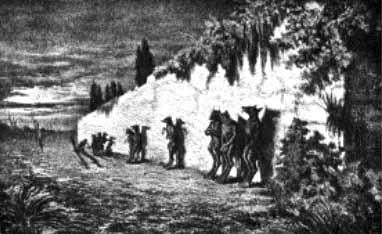
|
|
|

|

|
|
|

|
 Europe could easily be called the homeland of the werewolf, with these legends found in every nation and stretching back in time at least to ancient Greek writings, even farther back if you count evidence from cave paintings. Any way you figure it, the belief is very old. Europe could easily be called the homeland of the werewolf, with these legends found in every nation and stretching back in time at least to ancient Greek writings, even farther back if you count evidence from cave paintings. Any way you figure it, the belief is very old.
When people think of European werewolves, they generally think about beliefs that came to the fore during the witch craze that happened several hundred years ago. At that time, superstition held the entire continent in thrall. People who were supposed to be werewolves were put on trial and executed as heretics and sorcerers. The theology of the time said that you could only become a werewolf by making a pact with the devil. However, the werewolf belief existed both before and after the witch craze, and the average peasant generally viewed it in a different light than did the theologians who burned witches. In the folklore of the common people, werewolves were freaks of nature, victims of a curse, or persons who dared to mess with powers belonging to a pre-Christian worldview. They were often guilty of consorting with witches, Gypsies, Muslims, outlaws, beggars or other outcasts, for the legends used werewolves as symbols of the ultimate outsider. Depending on which region's folklore you listen to, werewolves could be heroic warriors protecting their homeland, dangerous killers who had lost all trace of humanity, or anything between those two extremes. Even today, the belief has not entirely died out in the rural corners of Eastern Europe. In rural Romania, many of the older peasants make sure that they feed both the wolves of the forest and the local beggars, because of a tradition that says it is best to be on good terms with the werewolves. These people believe that a werewolf will not eat your sheep if it is already full.
The text on this page is copyright 2007 by Jamie Hall. Please use proper citation if you are using this website for research. |